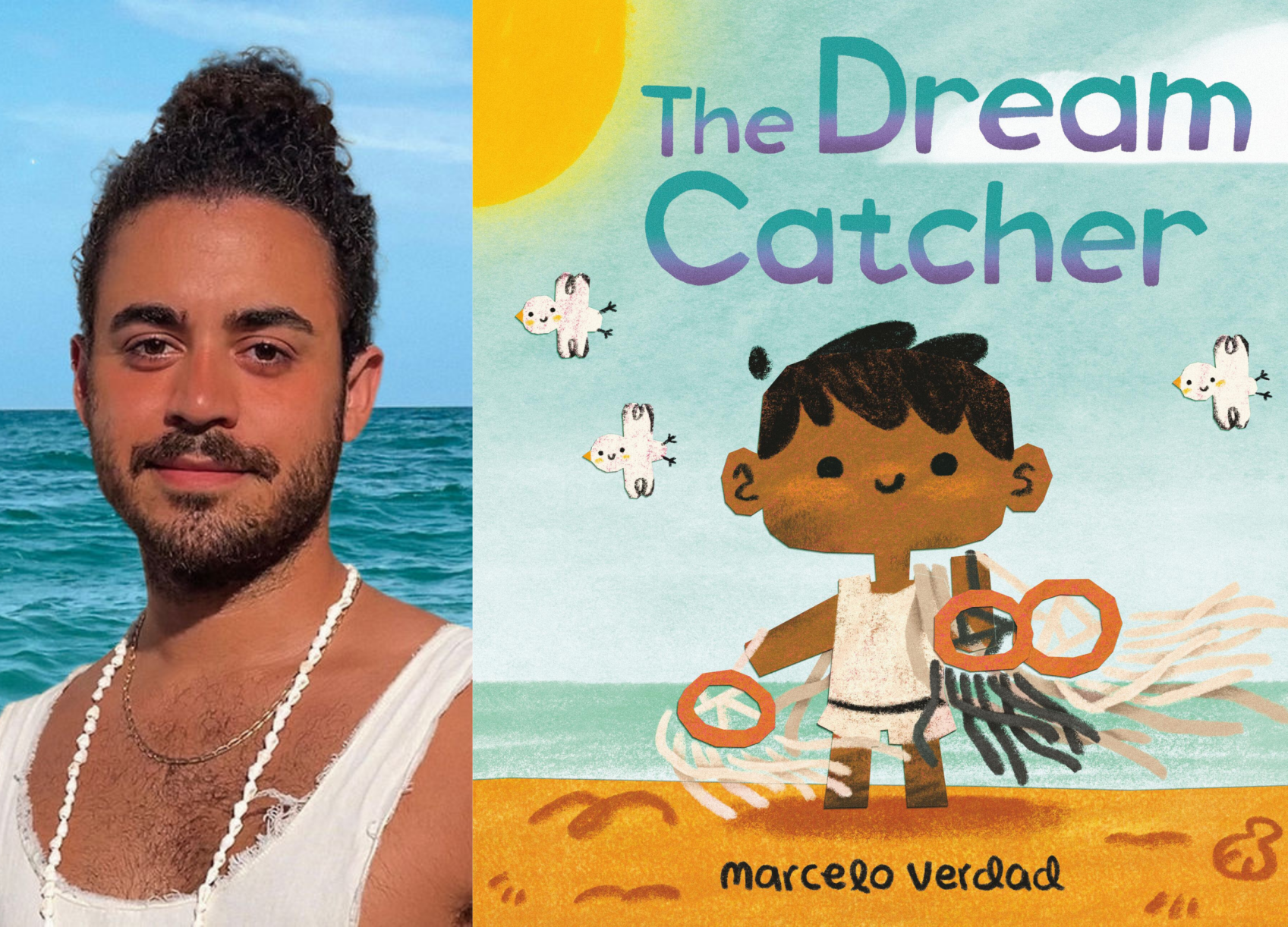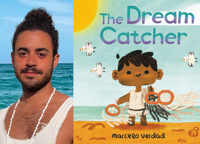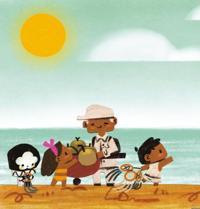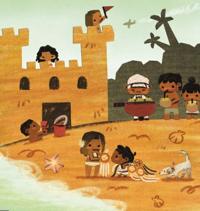
Marcelo Verdad's "The Dream Catcher" invites readers into a world where ambiguity fuels creativity. Through the story of young Miguelito and his grandfather in Oaxaca, Mexico, Verdad encourages children to explore and interpret the narrative in their own unique ways. (Image provided by Marcelo Verdad)
When having clear answers discourages us from exploring and creating new ideas, our certainty stifles imagination, turning predictability into a barrier to innovation and dreams.
This does not happen in Marcelo Verdad’s “The Dream Catcher.”
The lack of clear answers in “The Dream Catcher” invites us to explore and create new ideas. Our ambiguity becomes imagination, transforming uncertainty into a canvas for those innovations and dreams.
“The reader can take the story, make it their own, and then just give the story the meaning that they want to give,” Verdad said.
At its core, “The Dream Catcher” tells the story of a young boy named Miguel Angel who has very big dreams. It explores Miguelito's relationship with his abuelito, or grandpa, and highlights themes of innocence, hope and resilience.
Though Miguelito's circumstances are left somewhat ambiguous, the story focuses on his dreams and the special bond he shares with his grandfather. It provides a glimpse into the lives of children in Oaxaca, Mexico but does not narrow its focus only to Mexican or cultural themes.

At its core, "The Dream Catcher" is a heartwarming story about a young boy named Miguelito and his deep bond with his Abuelito. Set in the vibrant backdrop of Oaxaca, Mexico, the book beautifully captures themes of innocence, hope, and resilience. (Image provided by Marcelo Verdad)
“What I was trying to do, especially with my visuals, is to evoke that kind of innocence, or the feeling of innocence, cuteness and tenderness,” Verdad said.
Another thing that “The Dream Catcher” does not do, unlike most children's literature, is to attempt to teach the reader something.
It was a conscious choice by Verdad and his editor to avoid lecturing readers or forcing a single message, allowing the story to simply exist for readers to take what they want from it.
There are a few key reasons why it's important for a children's book to avoid being overly didactic or preachy. Mostly, it allows the story and characters to feel more realistic and nuanced rather than one-dimensional message vehicles.
But with more children's literature becoming less didactic, the importance of having a flexible story that respects different readers—allowing them to take away different lessons or meanings based on their own life experiences—has increased.
Antonette Chavez, owner of Casita Bookstore in Long Beach, has seen this firsthand.
“There’s a beautiful theory for empathy building when it comes to children’s books. The theory states that powerful books can be seen as windows, allowing you to see into the lived experiences of communities other than your own; mirrors, enabling you to connect with others whose experiences are similar to yours; and sliding doors, transporting you into others' experiences so you can ‘walk in their shoes’,” Chavez said.
This theory was coined by Rudine Sims Bishop, an educator often hailed as the pioneer of multicultural children's literature for her research in American children's literature.
Since Casita Bookstore opened its doors in 2022, Chavez has carefully selected each title to reflect the diverse communities of Long Beach.
With a strong focus on children's literature, Casita emphasizes stories written and illustrated by creators that represent a variety of cultures, experiences and perspectives.
Chavez has organized a variety of community events, including author talks, storytimes and workshops, to encourage conversations and build a sense of community around storytelling.
Additionally, Chavez has collaborated closely with schools and community organizations to introduce these stories into schools and into the hands of children, using them as tools to facilitate discussions among their families and communities.

“I believe we are currently experiencing a renaissance in which children’s books are allowing diverse and often marginalized groups to share their stories in ways that are accessible, representative and open to this theory of ‘mirrors, windows, and sliding doors’ by fostering connection, understanding, and empathy,” Chavez said.
Verdad, originally from Guanajuato, wrote “The Dream Catcher” after seeing a photo on Instagram many years ago of a young boy selling dream catchers on a beach in Mexico.
This image stayed with him and sparked questions about the boy's story. After some time, Verdad did a small initial drawing of the scene that became the book's cover.
Verdad also drew from his passion for children and experiences growing up in Mexico seeing kids working in difficult circumstances. This is one of many reasons why for Verdad, it is essential his book is also published in Spanish.
“It's necessary that whoever works with us, they're willing to publish my books in both Spanish and English. There's nothing to negotiate for us. It's always been very important,” Verdad said.
Verdad also simply prefers the Spanish version.
Verdad felt that with the Spanish version he was able to convey more heart and warmth through the word choices he made as the translator. As a native Spanish speaker, Verdad had full control over the nuances and felt it allowed him to better represent the story and characters.
As a native Spanish speaker, I need a way to explain the feeling that I'm trying to convey. If I can’t do that, it's not going to be a proper presentation for the message that I’m trying to convey, or the story I’m trying to tell," Verdad said.
You can buy “The Dream Catcher” by Marcelo Verdad here. You can visit Casita Bookstore at 1440 E 4th St, Long Beach, CA 90802 or visit their website here.














(0) comments
Welcome to the discussion.
Log In
Keep it Clean. Please avoid obscene, vulgar, lewd, racist or sexually-oriented language.
PLEASE TURN OFF YOUR CAPS LOCK.
Don't Threaten. Threats of harming another person will not be tolerated.
Be Truthful. Don't knowingly lie about anyone or anything.
Be Nice. No racism, sexism or any sort of -ism that is degrading to another person.
Be Proactive. Use the 'Report' link on each comment to let us know of abusive posts.
Share with Us. We'd love to hear eyewitness accounts, the history behind an article.